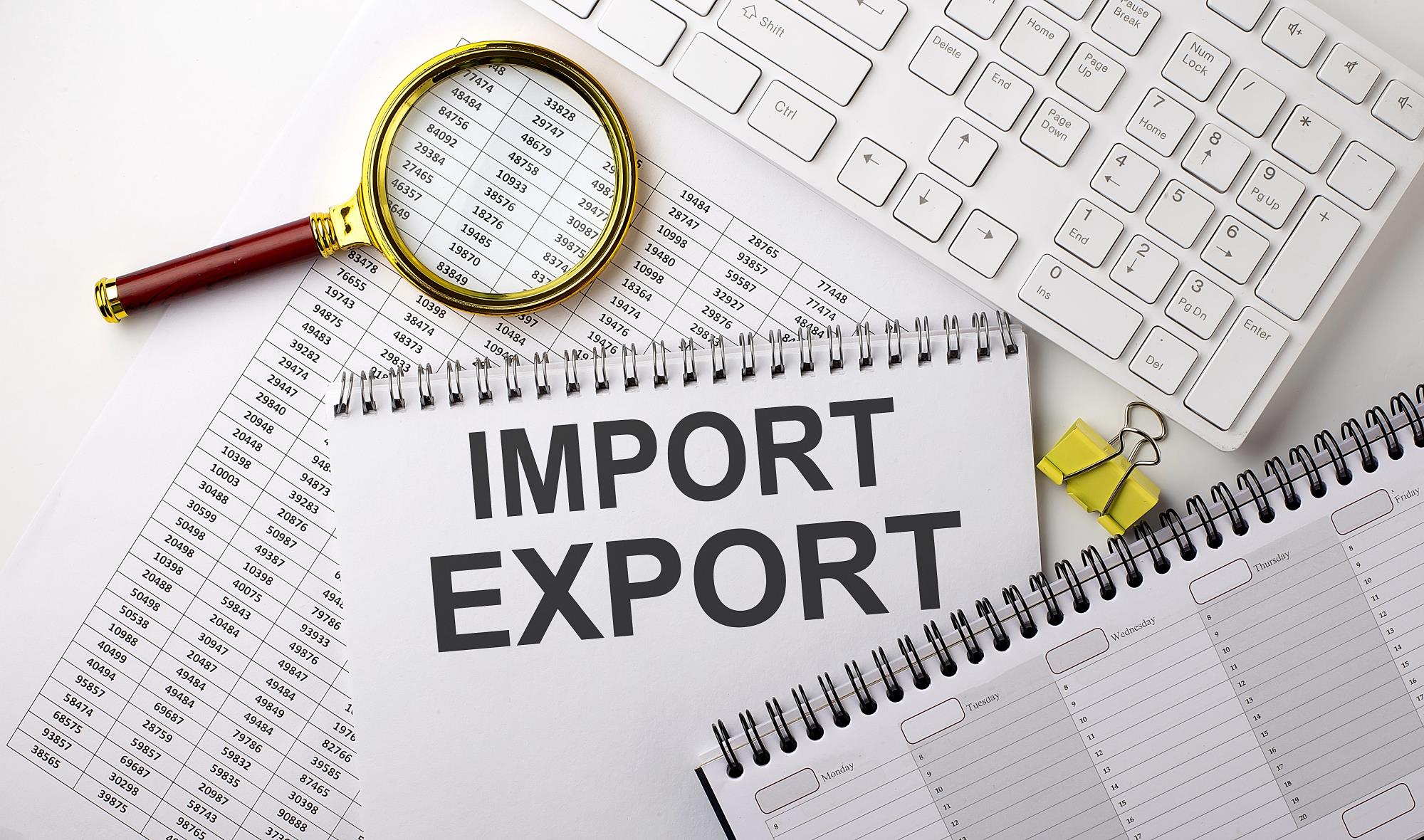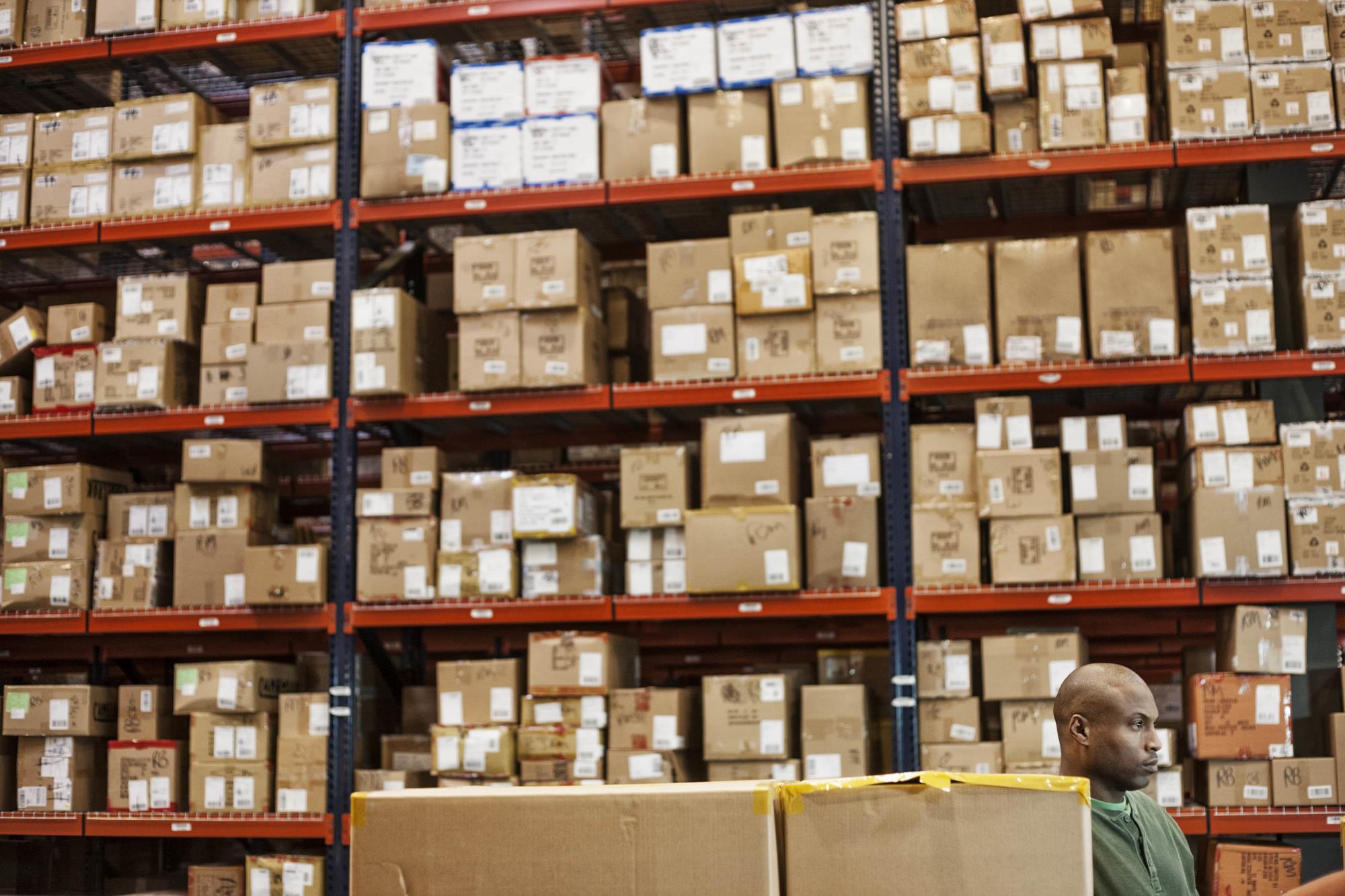Welcome to our latest blog post, where we will discuss sea freight’s environmental impact and explore ways to reduce it.
Sea freight is a crucial component of global trade, transporting approximately 90% of the world’s goods. However, it also significantly impacts the environment due to greenhouse gas emissions, marine pollution, and other ecological issues.
In this post, we will delve into six key aspects of sea freight’s environmental footprint and suggest practical measures that can be taken to minimise these effects.
Greenhouse Gas Emissions
Sea freight is a significant contributor to global greenhouse gas emissions, primarily due to the burning of fossil fuels by ships. These emissions are a major concern, contributing to global warming and climate change.
Carbon Dioxide (CO2) Emissions
Ships’ engines emit large amounts of carbon dioxide (CO2), a greenhouse gas driving climate change.
According to Statista, the average carbon footprint of cargo ships operating within the United Kingdom varies greatly by type. Large RoPax ferries, or cruise ships, have the largest emissions per metric ton of goods shipped per kilometre, at 376.67 grams of CO2. In comparison, bulk carriers emit 3.54 grams of CO2 per metric ton of goods shipped per kilometre. Furthermore, the south coast city of Southampton is home to the most polluting port in the UK. In 2018 the Port of Southampton’s maritime supply chain emissions amounted to roughly 1.6 million metric tons of CO2.
Measures such as adopting cleaner fuels and improving ship design can be implemented to reduce CO2 emissions. For instance, transitioning to low-carbon or zero-carbon fuels, such as hydrogen or ammonia, can significantly reduce CO2 emissions. Improving ship design to increase fuel efficiency can also contribute to lower emissions. Moreover, implementing energy-saving technologies such as wind-assisted propulsion and solar power can further reduce the carbon footprint of sea freight. Using digital tools to optimise routes and improve load factors can reduce CO2 emissions.
In the face of the climate crisis, the sea freight industry must take decisive action to reduce its CO2 emissions. Through technological innovation, operational efficiency, and regulatory compliance, the sector can significantly reduce its environmental impact and help contribute to the global effort to mitigate climate change.
Methane (CH4) and Nitrous Oxide (N2O) Emissions
In addition to CO2, ships emit other greenhouse gases, including methane (CH4) and nitrous oxide (N2O). These gases have a more potent warming effect than CO2, with methane being 25 times more potent and nitrous oxide 298 times more potent over a 100-year period.
Emissions of these gases can be reduced through efficient engine operation and emission control technologies. For instance, adopting advanced engine technologies that optimise combustion processes can minimise CH4 and N2O emissions. Additionally, emission control technologies, such as selective catalytic reduction and exhaust gas recirculation, can help reduce these emissions.
In conclusion, while sea freight plays a crucial role in global trade, it is essential to address its environmental impact. By adopting cleaner fuels, improving ship design, and implementing advanced engine and emission control technologies, the sea freight industry can significantly reduce greenhouse gas emissions and help contribute to global efforts to combat climate change.
Marine Pollution
Marine pollution, a significant environmental concern, is exacerbated by sea freight activities. Two primary sources of this pollution are oil spills and leaks and ballast water discharge, each posing unique challenges to marine ecosystems and human health.
Oil Spills and Leaks
Oil spills and leaks from sea freight vessels can have devastating consequences for marine life. These incidents, often accidental, result in the release of large quantities of oil into the sea, causing harm to both the marine ecosystem and the economy.
According to the International Tanker Owners Pollution Federation (ITOPF), oil spills from tankers have been at an all-time low. Still, the impact of even minor spills can be significant due to the toxicity of oil to marine species. Prevention of such incidents is paramount. Regular maintenance of ships and improved ship design can significantly reduce the risk of oil spills.
It is essential to ensure that ships are structurally sound and that all equipment functions correctly to prevent leaks.
Ballast Water Discharge
Ballast water discharge is another significant source of marine pollution from sea freight. Ships take on ballast water to maintain stability, draft, and manoeuvrability. This water often contains a variety of micro and macroscopic species, which can be transported to new environments when the ballast water is discharged. If the conditions are favourable, these non-native species can establish themselves in the new environment, potentially causing serious ecological, economic, and public health impacts.
The International Maritime Organization (IMO) has developed the “International Convention for the Control and Management of Ships’ Ballast Water andSediments” to address this issue.
The convention, which came into force internationally on 8th September 2017, applies to all vessels that operate in the waters of more than one Party to the convention. Treatment systems can help mitigate this issue by removing or inactivating these species before the ballast water is discharged. These systems must meet specific standards set by the IMO to ensure they effectively manage ballast water and reduce the risk of introducing invasive species.
In conclusion, while sea freight significantly contributes to marine pollution, measures can be taken to reduce its impact. Through regular maintenance, improved ship design, and effective ballast water management, we can protect our marine ecosystems while continuing to benefit from global trade.
Noise Pollution
Noise pollution from sea freight is a significant environmental concern, particularly for marine life.
The noise generated by ships can disrupt the natural behaviours of marine animals, affecting their communication, migration, and reproduction. This disruption can profoundly impact marine species’ health and survival.
Impact on Marine Mammals
Marine mammals like whales and dolphins are particularly sensitive to noise pollution. These creatures rely heavily on sound for communication, navigation, and hunting. The noise of ships can interfere with these essential activities, causing stress, disorientation, and even physical harm.
A study by the University of St Andrews found that naval efforts to protect endangered whales by gradually increasing the noise levels of sonar, a process known as “ramp-up”, have limited benefit. Many scientists fear that human-generated ocean noise could damage the hearing of these sensitive creatures. It was hoped that “ramping up” would encourage the animals to move away calmly before the sound reached full volume.
The research revealed that merely a handful of creatures deviated from their course upon the vessel’s initial transmission of “ramp-up” noises. As a result, the overall noise levels experienced by the humpback whales were diminished by just a few decibels. It is, therefore, imperative to contemplate ship designs with lower noise output and implement velocity reductions to alleviate these impacts.
By reducing the noise from ships, we can minimise the disturbance to marine mammals and help preserve these magnificent creatures.
Impact on Fish Populations
Noise pollution doesn’t only affect marine mammals; it also has significant impacts on fish populations. Fish use sound for various purposes, including communication, navigation, and detecting predators or prey. The noise ships generate can disrupt these activities, leading to changes in behaviour and potentially affecting their reproduction.
A study published in the Proceedings of the Royal Society B: Biological Sciences found that anthropogenic noise pollution from pile driving can disrupt the structure and dynamics of fish shoals. The noise affected the cohesion and directional order of the shoals, disrupting the abilities of individual fish to coordinate their movements with one another. This disruption could have implications for the functional benefits of a group’s collective behaviour, such as reduced predation risk and social information exchange.
It’s essential to implement noise abatement measures to reduce these effects. These include quieter ship designs, speed reductions, and technologies to dampen the noise generated by ships. By taking these steps, we can help protect fish populations and maintain the health of our marine ecosystems.
Waste Management in Sea Freight: A Key to Sustainable Shipping
Effective waste management is a pivotal aspect in mitigating the environmental impact of sea freight.
As the shipping industry continues to grow, so does the volume of waste it generates. This waste, if not properly managed, can lead to significant environmental damage, particularly to our oceans and marine life.
Solid Waste Disposal: A Persistent Challenge
Ships generate substantial waste, especially those involved in sea freight. This waste ranges from discarded packaging materials to food waste and, most notably, plastics.
According to a report by South Wales Ports, ships must provide notification before entering the port of the waste they will discharge, including information on types and quantities. Furthermore, ships must deliver their waste to port reception facilities before leaving port unless they have sufficient dedicated storage capacity for the waste and for it to be accumulated until the next port of call.
The improper disposal of this waste, particularly plastic, poses a significant threat to the marine ecosystems. Most plastics can take hundreds of years to decompose, during which time they can cause harm to marine life and disrupt delicate oceanic ecosystems. Therefore, improved waste management practices are essential to prevent pollution. These practices could include more efficient waste segregation on board, recycling where possible, and ensuring that waste is disposed of at designated port facilities.
Sewage and Greywater Discharge: An Overlooked Issue
Another significant waste product from ships is sewage and greywater. Greywater refers to wastewater from sinks, showers, and laundry facilities onboard. If discharged untreated, these can introduce harmful substances and nutrients into the ocean, leading to problems such as eutrophication, which can harm marine ecosystems and deplete oxygen levels in the water.
A report by HFW highlights the new MARPOL Regulations that came into force in 2013, largely prohibiting garbage disposal from ships at sea. As a result, it has become common practice for ships to send their garbage, including sewage and greywater, to shore-based reception facilities. To mitigate this issue, ships can install advanced treatment systems to treat greywater and sewage onboard before discharge. These systems use various methods to remove harmful substances and reduce the environmental impact of the discharge.
In conclusion, effective waste management in sea freight is a complex but necessary challenge. It requires a combination of improved practices on board ships, advanced treatment systems, and robust waste reception facilities at ports. The sea freight industry can significantly reduce its environmental footprint and contribute to healthier oceans by tackling this issue.
Sustainable Shipping Practices
The maritime industry, a vital cog in the global trade machine, increasingly recognises the need to adopt sustainable shipping practices. These practices aim to mitigate the environmental impact of sea freight, primarily through reducing greenhouse gas emissions and marine pollution.
Slow Steaming
One such practice is slow steaming, which reduces a ship’s speed to decrease fuel consumption significantly.
According to the Sustainable Shipping Initiative (SSI), a collective of ambitious maritime leaders, slow steaming reduces greenhouse gas emissions and lessens noise pollution, contributing to a healthier marine environment.
Eco-Friendly Ship Design
Besides operational changes like slow steaming, the industry is exploring innovative ship designs to improve fuel efficiency and reduce pollution.
These designs focus on optimising the hull shape and incorporating energy-saving technologies. The SSI’s Roadmap to a Sustainable Shipping Industry outlines key milestones to be achieved over the coming decades. It emphasises the need for transparency and accountability to drive performance improvements and sustainable decision-making.
It also highlights the importance of developing financial solutions that reward sustainable performance and enable the large-scale uptake of innovation, technology, design, and operational efficiencies. The roadmap further advocates for a shift to a diverse range of zero-carbon energy sources, using resources efficiently and responsibly for zero-emission shipping and avoiding negative environmental and biodiversity impacts.
To recap, adopting sustainable shipping practices like slow steaming and eco-friendly ship design, coupled with a commitment to transparency, innovation, and responsible resource use, can significantly reduce the environmental impact of sea freight. The maritime industry’s journey towards sustainability is a collective effort, requiring the participation of all stakeholders, from shipowners to banks and sustainability non-profits.
Industry Regulations and Initiatives
Industry regulations and initiatives are instrumental in mitigating the environmental impact of sea freight. They serve as a guiding compass for shipping companies, steering them towards operations more harmoniously with the environment.
International Maritime Organisation (IMO) Regulations
The International Maritime Organisation (IMO), a specialised branch of the United Nations, plays a crucial role in regulating maritime operations.
The IMO’s principal regulatory framework is the International Convention for the Prevention of Pollution from Ships, also known as MARPOL. This convention was first established on the 2nd of November 1973 and serves as the cornerstone of international efforts to prevent pollution from ships, whether it arises from routine operations or accidents. The MARPOL Convention has evolved over time through various amendments and now encompasses six distinct technical Annexes. These Annexes address a wide range of pollution types, including oil pollution, pollution from noxious liquid substances in bulk, pollution from harmful substances transported in packaged form, sewage pollution, garbage pollution, and air pollution from ships.
Adherence to these regulations is fundamental for shipping companies aiming to minimise their environmental footprint.
Voluntary Industry Initiatives
Beyond mandatory regulations, certain shipping companies take extra steps by voluntarily implementing measures to minimise their environmental impact further.
A notable example of such an initiative is the Clean Shipping Index (CSI). This independent system offers a comprehensive evaluation of a vessel’s environmental performance, serving as a practical tool for distinguishing port and fairway fees or opting for greener shipping alternatives. The CSI incentivises shipping companies through reduced fairway dues by the Swedish Maritime Administration (SMA) and lower port fees at various ports. The CSI’s all-encompassing approach to emissions means that a high score can only be achieved when a vessel earns points across all potential emission categories, thereby encouraging a thorough commitment to environmental responsibility.
By complying with industry regulations and engaging in voluntary initiatives, shipping companies can significantly reduce their environmental impact, leading to cleaner oceans and a more sustainable planet.
Conclusion
The environmental impact of sea freight is a pressing concern that requires immediate attention. By understanding the various aspects of this impact and implementing practical measures, we can work towards a more sustainable future for the shipping industry.
If you’re interested in learning more about environmentally responsible sea freight practices or require assistance with your shipping needs, please don’t hesitate to contact us. Our team of experts is here to help.



